The AgriStack Farmer Registry is a key initiative by the Government of India aimed at digitizing agricultural records and ensuring efficient delivery of benefits to farmers.
By integrating Aadhaar-based authentication, land record validation, and financial inclusion, this registry acts as a centralized digital repository for farmer identification and government scheme access.
Farmer Registry Official Links
Farmer Registration Process
The Farmer Registration Process under AgriStack enables farmers to register through Aadhaar authentication, land record verification, and e-KYC for seamless access to government benefits, subsidies, and financial aid.
Below is the full process of farmer registration.
Registration & Login
- Farmers must visit the state-specific Farmer Registry portal or a Common Service Center (CSC) to initiate the registration process.
- Registration is also available through agriculture department offices or mobile applications.
- Select “Farmer” on the homepage and click “Create New User Account” for first-time registration.
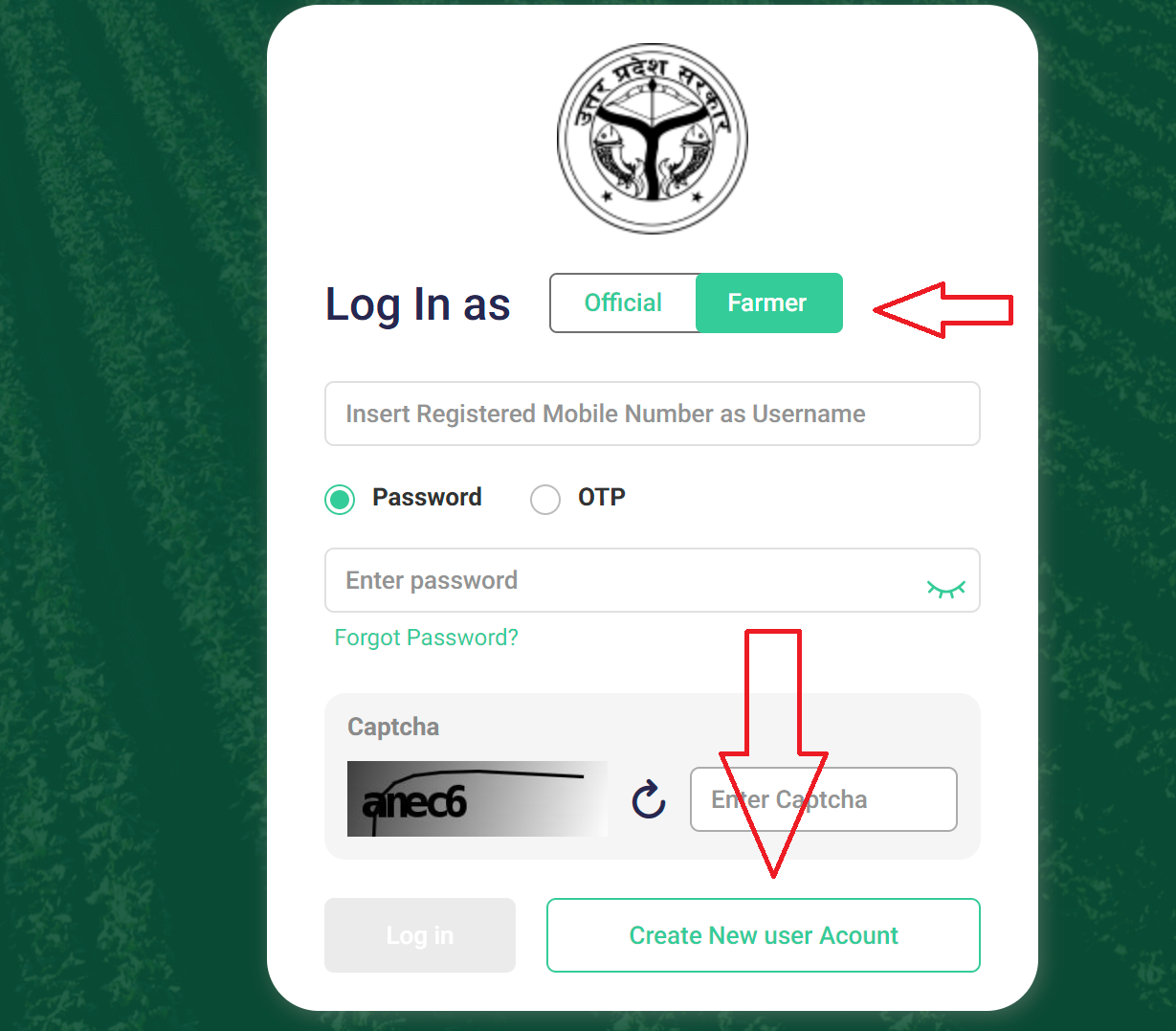
- Enter Aadhaar Number.
- Tick the declaration box and click Submit.
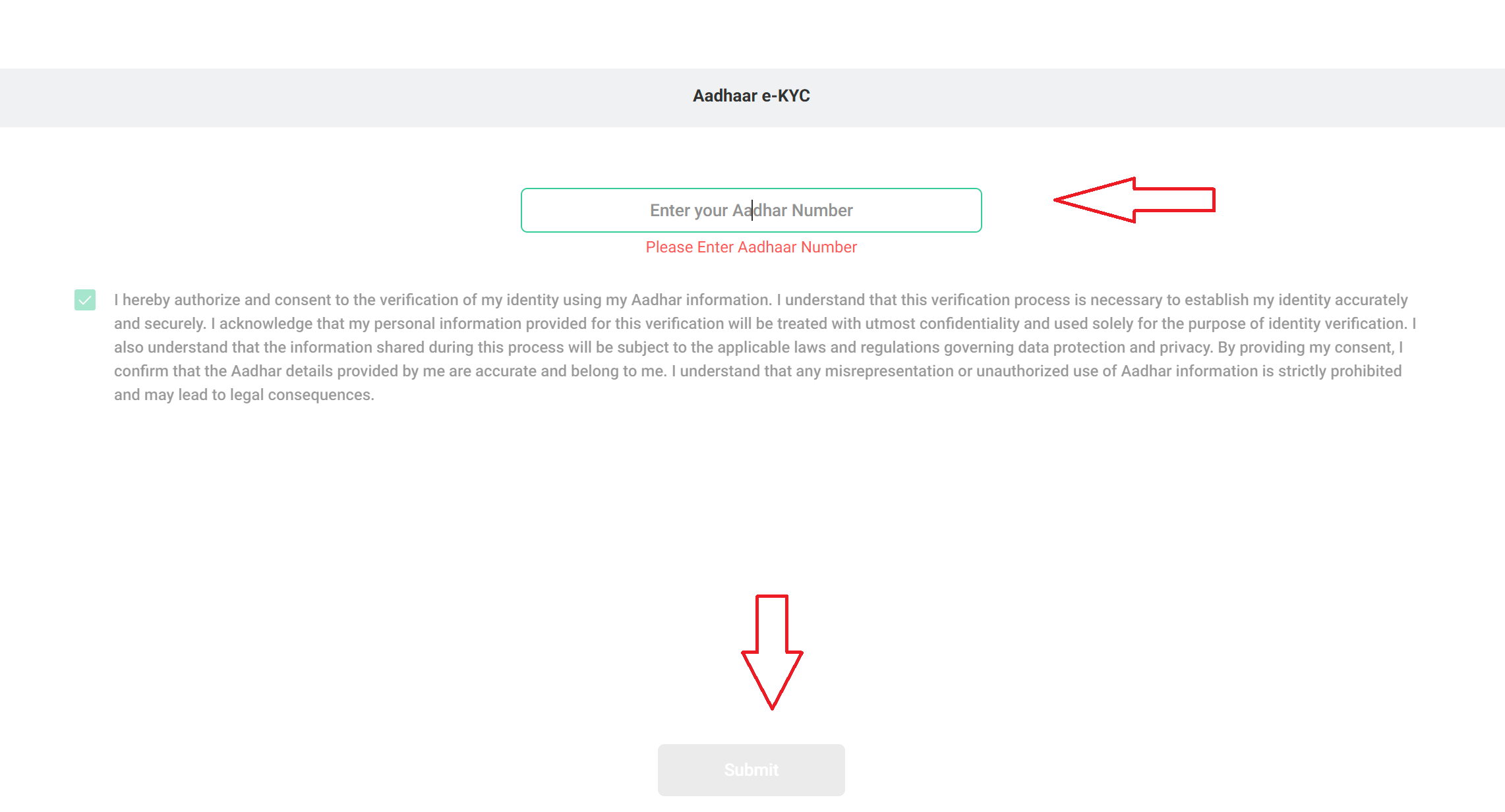
- An OTP will be sent to the Aadhaar-linked mobile number.
- Enter the OTP and click Verify.
- Return to the login page.
- Enter your Mobile Number as Username, Password, and Captcha.
- Click Login.
- Your details will be displayed.
- Scroll to the bottom and select “Register as Farmer”.
Completing Farmer Profile
- Select Social Category (General, SC, ST, OBC).
- Ensure Aadhaar-fetched details are correct.
- Edit if needed and proceed.
- Aadhaar-linked address is auto-filled.
- If incomplete, click “Insert Related Resident Details”.
- Enter district, sub-district, village, and PIN code.
Adding Additional Land Records
- Select “Owner” in the Land Ownership section.
- Choose Agriculture as your occupation.
- Click “Fetch Land Details” to auto-retrieve records.
- Enter Khasra (Gata) Number to verify land.
- Select the landowner’s name and verify details.
- If multiple land parcels exist, repeat the process.
- Click “Verify All Land” to confirm total area.
Entering Social Registry Details
- Provide Ration Card/Family ID (if applicable).
- This step can be skipped if not available.
- Select Revenue Department for approval.
- Accept the declaration by clicking “I Agree”.
- Click Save.
e-Signature Verification
- Complete e-Signature using Aadhaar OTP.
- Submit the registration form.
- A Farmer Enrollment ID is generated.
- Save this ID for future reference.
- Download the PDF of the registration form.
Post-Approval Process
- If details match land records, approval is instant.
- If a mismatch occurs, manual verification is required.
- Once verified, a Farmer ID is issued.
- Farmers can log in to download the Farmer Registry Certificate.
Assisted Farmer Registration
In this process, farmers receive guidance from authorized personnel to complete their registration efficiently. The assisted mode is categorized into different methods to accommodate various registration needs.
Farmer Registration via State Government Camps
This method involves setting up temporary registration camps at the village level, managed by officials from the agriculture and revenue departments.
Steps for Camp-Based Registration:
- Registration camps are organized at predetermined locations within the village.
- Government officials assist farmers in completing Aadhaar-based eKYC and filling out registration forms.
- Farmers claim their land records while officials cross-check documents with digital records.
- Officials explain the importance of consent and assist farmers in providing e-signatures.
- Applications may be auto-approved if the name-match score meets the required criteria or undergo manual verification.
- Upon successful registration, farmers receive a unique enrollment ID.
Farmer Registration via CSC Operator Assistance
Common Service Centers (CSCs) act as digital service hubs where trained operators assist farmers with their registration.
Steps for CSC-Assisted Registration:
- CSC operators log in with their credentials and access the registration portal.
- Operators help farmers complete Aadhaar-based eKYC and fill out the registration form.
- Farmers’ land details are verified and linked to Aadhaar.
- Operators assist farmers in providing consent and completing the e-sign process.
- If applicable, any fees are processed through the CSC payment gateway.
- Applications are submitted and either auto-approved or manually verified.
- Farmers receive an Enrollment ID for tracking their registration.
Check Enrollment Status
To check your Enrollment Status, follow these steps:
- Go to the official Agri Stack portal of your state.
- Click on the "Check Enrollment Status" option on the homepage.
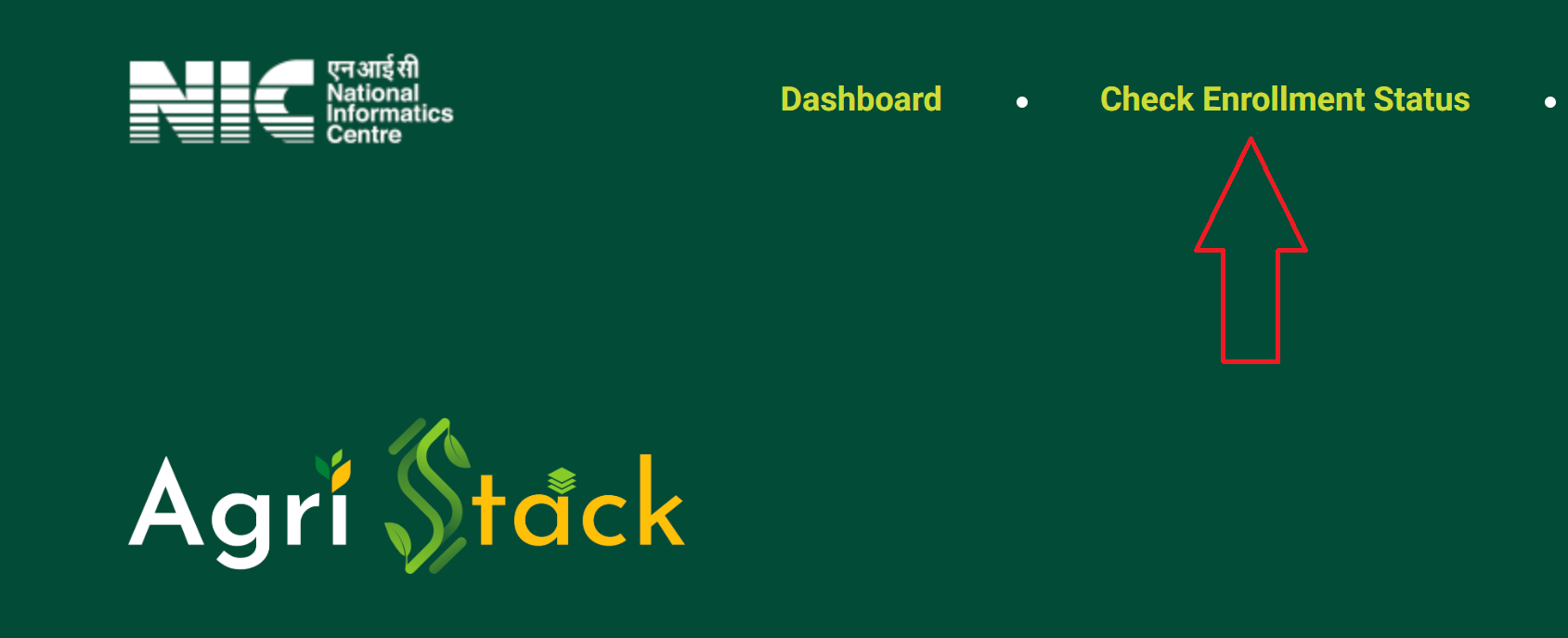
- Enter your Enrollment ID or Aadhaar Number, then click on "Check" to view your status.
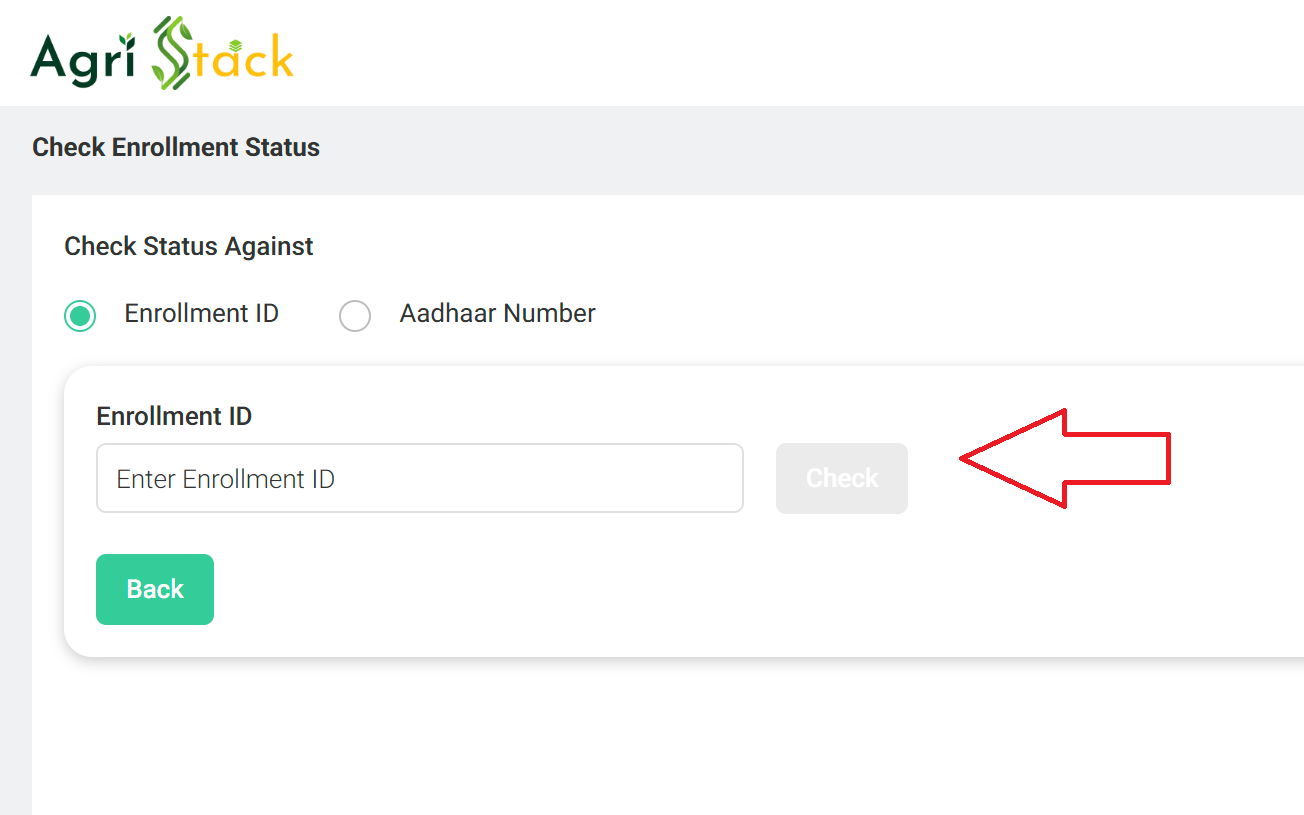
Benefits of Farmer ID
The Farmer ID enables access to:
- PM-KISAN.
- Crop insurance schemes
- Kisan Credit Card (KCC) linked financial services
- AgriStack digital services (farm advisories, weather updates, etc.)
What is Agri Stack?
Agri Stack is a digital initiative launched by the government to streamline collaboration among various stakeholders in India's agricultural sector. It aims to enhance farming outcomes by leveraging data and digital services.
This platform is designed to consolidate high-quality agricultural data and provide seamless access to relevant entities, enabling them to develop innovative solutions.
Inspired by the InDEA 2.0 Architecture formulated by MeitY, Agri Stack is being developed by the Ministry of Agriculture & Farmers Welfare. It follows an open and federated structure, placing state governments at the center of its framework. The initiative ensures a participatory and inclusive approach, fostering sector-wide evolution to shape the future of Indian agriculture.
Agri Stack is intended to help farmers by facilitating access to affordable credit, superior farm inputs, personalized advisory services, and improved market connectivity. Additionally, it enables the government to efficiently plan and implement agricultural welfare programs.
Objectives
- Enhancing government scheme delivery – Ensuring benefits reach farmers efficiently and in a timely manner.
- Enabling digital identification and authentication – Creating a seamless process for farmer verification.
- Reducing costs and risks – Making agricultural finance, credit, and essential services more accessible and affordable.
- Encouraging inter-ministerial coordination – Streamlining policy execution between agriculture and allied ministries at both central and state levels.
- Promoting innovation – Providing Agri-Tech companies with easy access to structured agricultural data to drive new advancements.
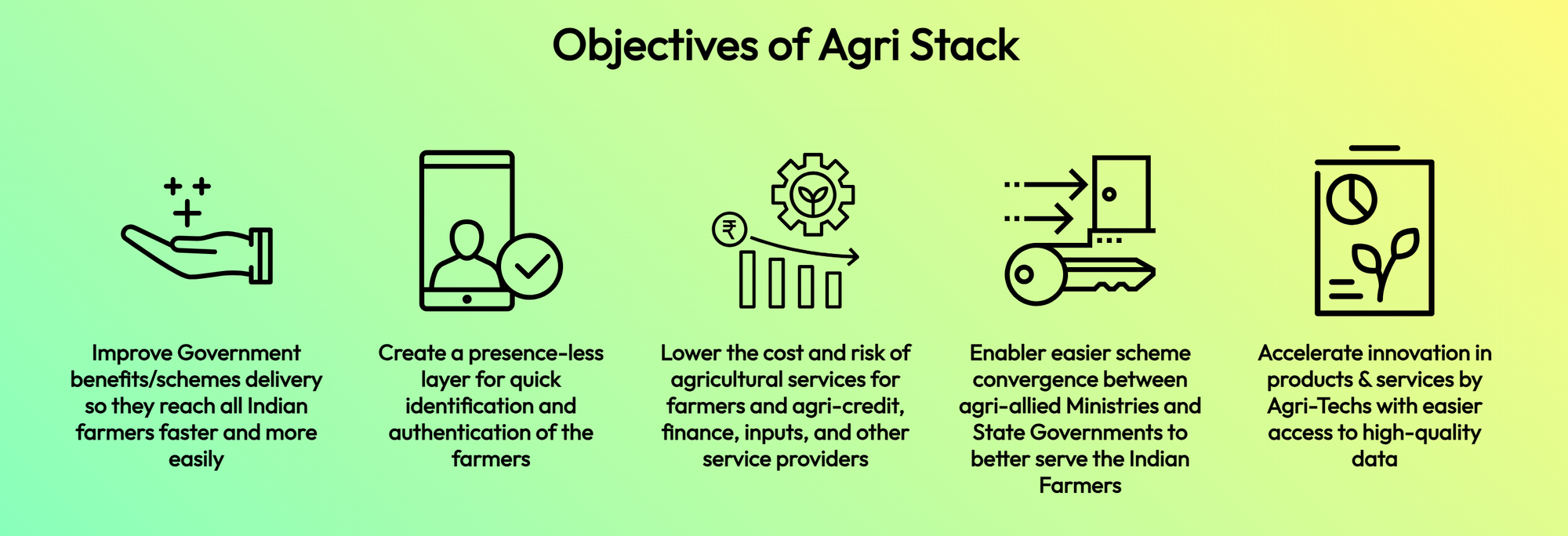
Core Components of Agri Stack
Agri Stack is set to evolve over time, but some foundational elements have already been established:
- 23 States have formed steering committees comprising Revenue and Agriculture Departments to oversee implementation.
- 22 States have integrated APIs for land record verification.
- 2000+ Agri-Tech startups and companies stand to benefit from the initiative, fostering agricultural innovation and growth.
This initiative is expected to transform the agricultural landscape in India, ensuring digital inclusivity, data-driven decision-making, and better service delivery for farmers.
FAQs Related To Farmer Registration, and Farmer ID
Which states have implemented the Farm ID system?
Uttar Pradesh, Maharashtra, and Chhattisgarh have successfully generated Farm IDs for 100% of land records. Maharashtra has further enabled real-time updates to accommodate land mutations. Madhya Pradesh is in the trial phase, testing the system in one district before full implementation.
Will Farm ID be assigned to all plots or only agricultural land?
Farm ID is mandatory for agricultural plots, while other plots may receive an ID based on state government discretion. Many Record of Rights (RoR) systems do not classify land by usage type, making it optional for non-agricultural lands.
How does the system handle joint ownership of land?
For joint ownership, at least one owner must have a defined land extent greater than zero. Farm IDs can be assigned individually to each owner or collectively to a group of owners based on ownership structure.
Will a single Farm ID be generated for a Khata or separate IDs for each plot?
Each plot within a Khata receives a distinct Farm ID, provided the owner's land extent is recorded. The ID reflects the portion owned by each individual within a specific land parcel.
Can a Farm ID be linked to a scheme beneficiary who is not the landowner?
Yes, the system allows landowners to authorize a scheme beneficiary. This ensures that cultivators receive benefits without needing to formally declare tenancy.
How are Farm IDs affected by land mutations?
Changes in land ownership due to mutations are continuously synchronized with the Farmer Registry. New IDs are created or updated based on the updated land records.